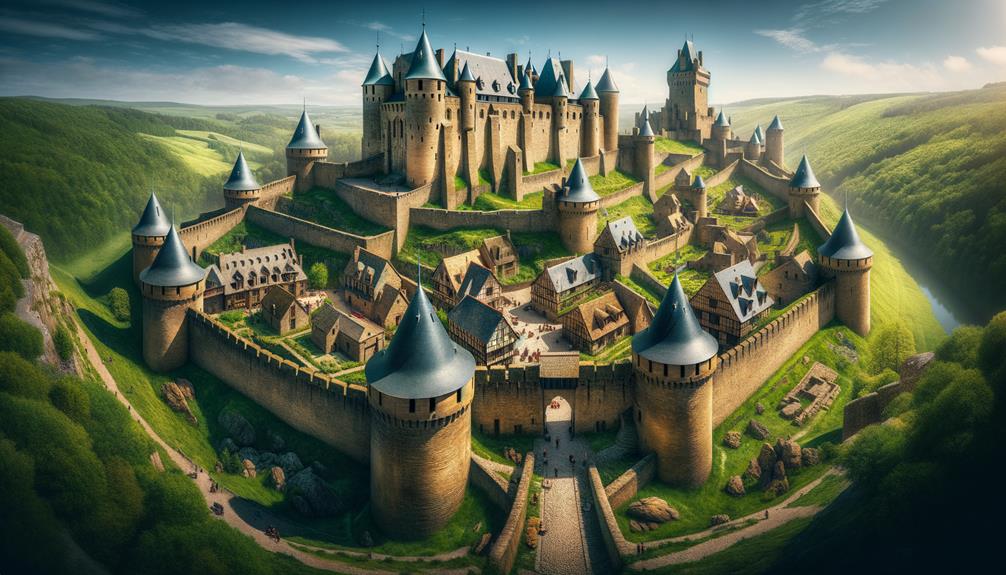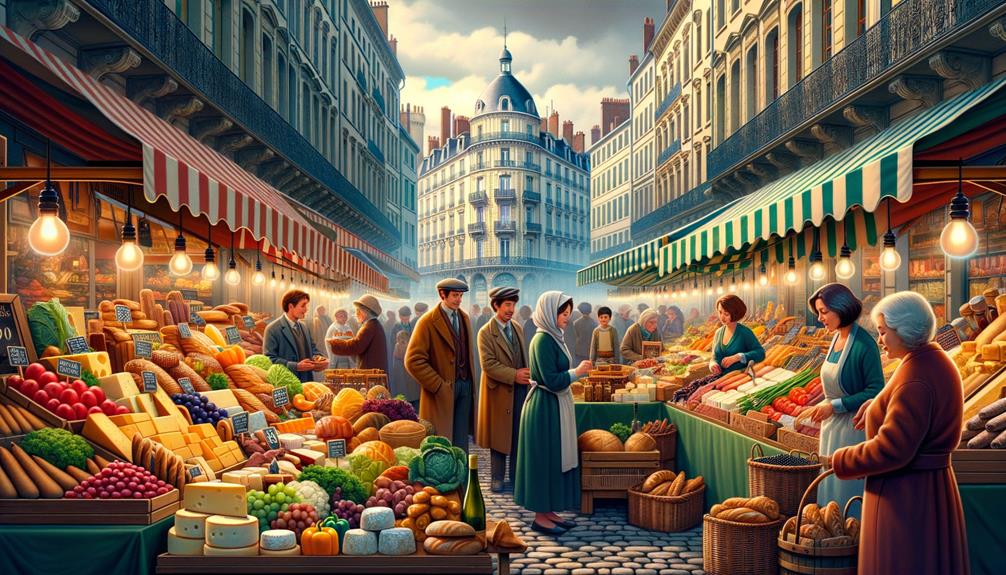Stepping through the grand gates of the Carcassonne Medieval Fortress felt like traveling back in time. The ancient stone walls, aged by centuries, seemed to murmur stories of past battles, resilience, and daily life inside the citadel. Each cobblestone path hinted at hidden secrets, while the stunning views of the Montagne Noire and the Pyrenean mountains offered a mesmerizing backdrop. Our guide, fluent in French, English, and Spanish, added depth to the experience with vivid historical tales. But one aspect of the tour stayed with me long after I left…
Historical Evolution
Walking along Carcassonne's ancient defensive walls, I can't help but be amazed at the architectural brilliance and adaptability of medieval times. These walls, a blend of Romanesque and Gothic styles, tell a story of resilience and strategic thinking, highlighting the city's significance through different periods.
Built not just for beauty but for protection, these walls were designed to fend off invaders. From the sturdy Romanesque fortifications to the more detailed Gothic elements, every stone and battlement speaks of a time when security was a top priority. The towers, battlements, and gateways are more than just structures; they are a testament to the meticulous planning that went into safeguarding this medieval fortress.
As I walk through the gateways and along the battlements, the weight of history is palpable. Each layer of stone reflects the evolving tactics of warfare, driven by the constant need for protection in a chaotic world. The walls of Carcassonne are more than historical artifacts; they symbolize human ingenuity and the relentless pursuit of freedom and safety.
Construction Techniques
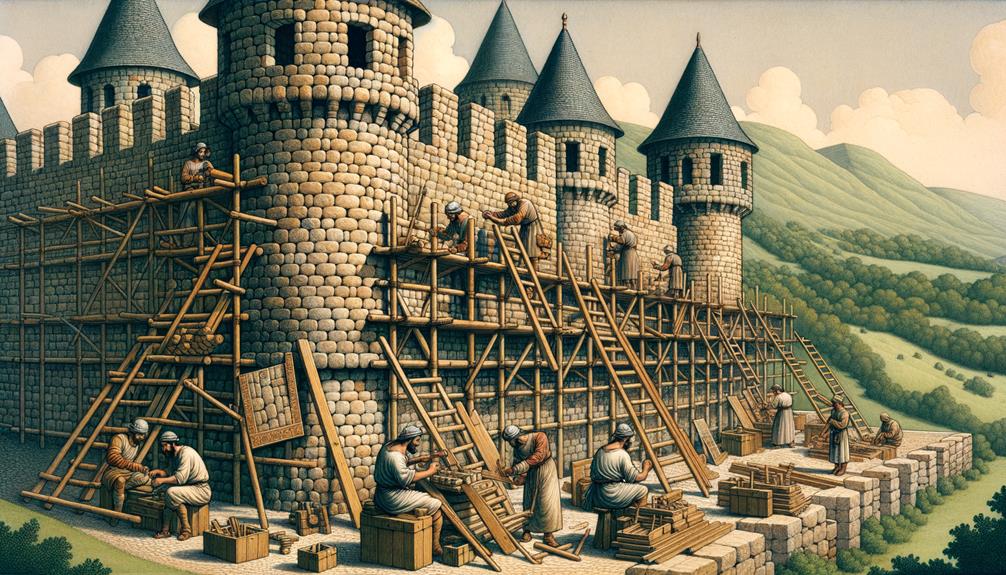
Standing in front of Carcassonne's massive walls, I can't help but admire the smart use of limestone blocks and mortar that give the fortress its incredible strength. The skill of the craftsmen is clear in the detailed and solid construction, with compacted earth cores adding extra stability. These old techniques highlight not just the practicality but also the artistry of medieval engineering.
Stone and Mortar Composition
Walking along the sturdy stone and mortar walls of Carcassonne's fortress, I can't help but admire the medieval craftsmanship that has stood firm through centuries. These walls and towers, built with carefully selected stone for its strength, have survived countless conflicts and harsh weather.
The medieval builders were meticulous, understanding that a strong binding agent was crucial. Mortar, often overlooked, played a key role in keeping these massive stones in place, ensuring the stability needed for defense. This combination of stone and mortar not only fortified the fortress but also allowed for detailed features like arrow slits and decorative carvings that remain visible today.
To me, Carcassonne's walls and towers represent more than just a fortress; they reflect human ingenuity and the enduring quest for security and beauty. These ancient structures are a testament to the skill and dedication of those who built them, leaving a legacy that continues to inspire.
Tamped Earthen Cores
While diving into the construction techniques of medieval fortresses, I find myself captivated by the use of tamped earthen cores. This method, often linked to Chinese defensive walls, involved compacting earth and other materials within the walls to better absorb artillery impacts. It not only added structural strength but also provided impressive resistance to enemy attacks.
As I wander through Carcassonne, I can't help but imagine how its ancient walls might have benefited from such techniques. Picture the already formidable defenses of Carcassonne enhanced with the sturdy, shock-absorbing qualities of tamped earthen cores. By compacting earth, these cores became incredibly resilient, offering a clever solution to the problem of artillery bombardment and showcasing the adaptability of ancient engineers.
Reflecting on this, I am struck by the blend of creativity and practical know-how that those times demanded. The walls of Carcassonne stand as monuments to human ingenuity, symbols of freedom and protection that have withstood the test of time. The use of tamped earthen cores in wall construction exemplifies how ancient builders balanced strength and adaptability to create enduring fortifications.
Defensive Innovations
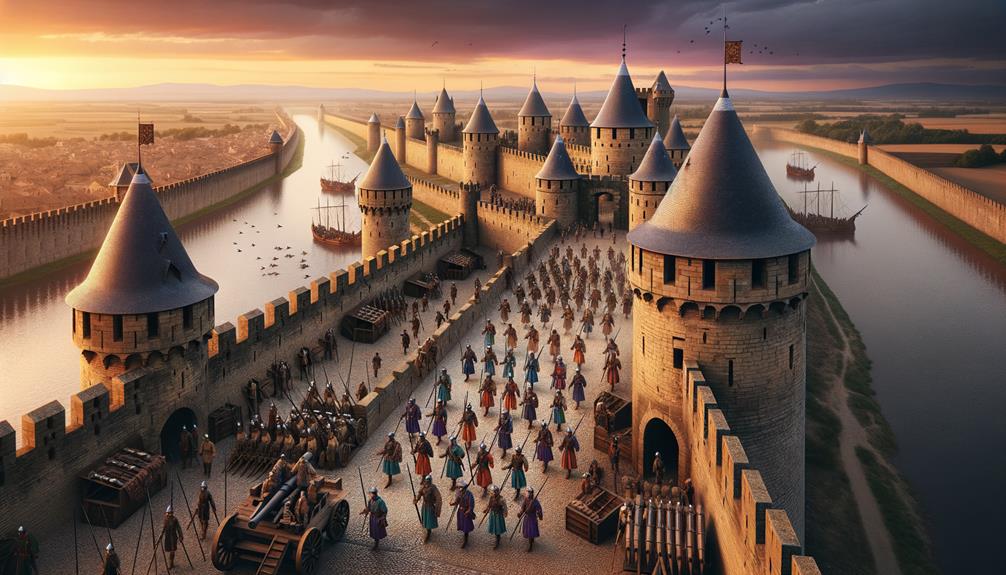
Strolling along the ancient walls of Carcassonne, I was struck by the cleverness of its defenses. The bastions and star forts, designed to counter artillery, blend tactical smarts with architectural creativity. It's impressive how these structures fit so naturally into the landscape, making the fortress a nearly unbreakable stronghold.
Bastion and Star Forts
I'm fascinated by the clever design of bastions and star forts, which were developed to counter the destructive power of gunpowder artillery. These structures revolutionized medieval defensive strategies and architecture. Bastions, with their angular projections, allowed defenders to cover each other's positions, making it nearly impossible for attackers to find a blind spot. The intricate design of star forts, with their polygonal shapes, further boosted this defensive capability.
Looking back at the evolution of these structures, their strategic brilliance is truly admirable. The layout of star forts, like Fort Bourtange in the Netherlands, shows just how effective these innovations were. They transformed the battlefield, offering strong defense against artillery attacks.
Here's a quick comparison to illustrate these defensive advancements:
| Feature | Bastion | Star Fort |
|---|---|---|
| Design | Angular Projections | Polygonal Structure |
| Purpose | Flanking Fire | Multi-Angle Defense |
| Example | Carcassonne | Fort Bourtange |
| Advantage | Covers Blind Spots | Resists Bombardment |
| Development Era | Medieval | Post-Medieval |
These advancements in fortification technology not only protected the inhabitants but also showed a remarkable adaptation to the changing art of warfare. The creativity and foresight in these designs continue to inspire admiration.
Artillery-Resistant Wall Design
Europe's bastions and star forts showed how they adapted to artillery, but the Chinese took a different path. During the Ming dynasty, they used tamped earthen cores in their walls to absorb the impact of gunpowder attacks. This clever method showed their strategic defensive skills. The tamped earth acted like a cushion, spreading out the force from artillery strikes that would crack solid stone.
Walking through Carcassonne, it's interesting to see the differences between European and Chinese designs. Europeans focused on geometry with bastions and star forts to deflect cannonballs, putting a lot of effort into their external defenses. Meanwhile, the Chinese built resilience into the walls themselves. These medieval walls weren't just simple barriers; they were examples of smart engineering designed to handle the new threat of gunpowder artillery.
Looking at Carcassonne's strong stone structures, you can almost imagine the strategic thinking behind these defenses. Each brick and layer of earth wasn't just a building material but a testament to human creativity. It's a reminder that our ability to adapt and innovate is often what protects our freedom.
Integrated Defense Structures
How did Carcassonne's medieval fortress manage to incorporate such an impressive array of defensive structures to withstand the constant threats of its time? As I walk through the castle, I'm struck by the thoughtful design that has endured for centuries. The fortress seamlessly incorporates bastions and curtain walls, forming a complex web of protection.
Strategically placed towers, each with parapets and arrow slits, offer perfect spots for archers, creating a strong defense against invaders. The moat adds another layer of security, making any assault difficult. As I pass the gatehouses, I see how they serve as the first line of defense, ready to prevent any unauthorized entry.
Thinking about the ingenuity behind Carcassonne's defenses, it's clear that every element—from the star forts designed to resist gunpowder artillery to the interlocking walls—was carefully planned. This castle isn't just a historical relic; it's a testament to the evolution of medieval defensive strategies, combining elements that demonstrate the art of fortification. The integration of these structures gives a profound sense of security, knowing that such a place could offer refuge from the chaos of medieval warfare.
Fortress Significance
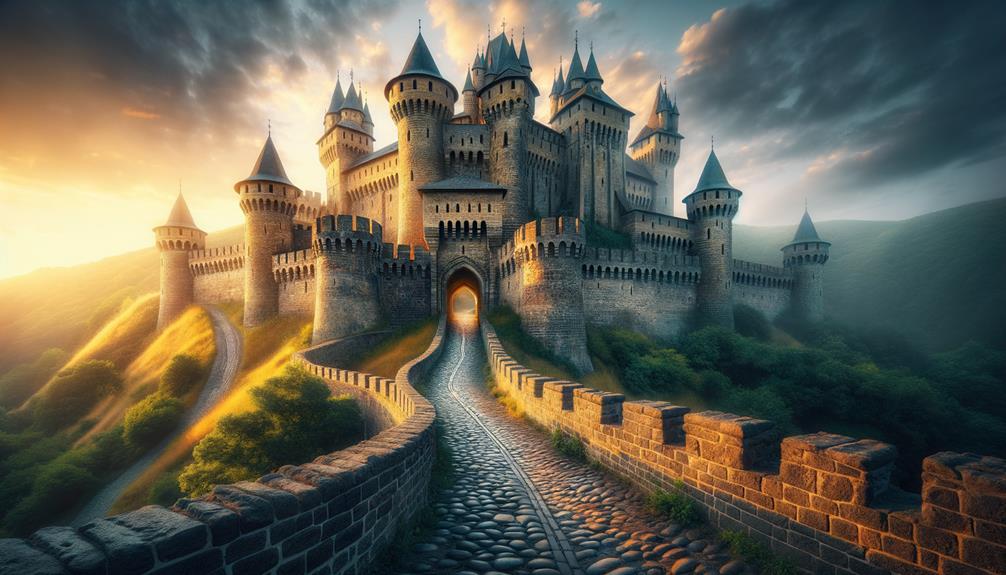
Ever wondered why the Carcassonne Medieval Fortress remains a symbol of historical resilience and architectural brilliance? Strolling through this UNESCO World Heritage Site, I was struck by its imposing presence. The fortress, with its intricately designed walled cities, tells stories of a time when such structures were vital for survival and defense. Its towering walls and solid towers are not just relics of the past but vivid reminders of medieval ingenuity.
Walking through the barbican entrance felt like stepping back into the Middle Ages. Each stone seemed to echo the footsteps of those who once roamed its grounds. The ancient palace, with its maze-like corridors, offered a glimpse into the everyday life of its inhabitants. From the walls, the sweeping views of the nearby town, the Montagne Noire, and the distant Pyrenean mountains were breathtaking, highlighting the strategic importance of this fortress.
Encounters with horsemen and troubadours added to the medieval atmosphere. The legendary Dame Carcas herself seemed to welcome me into history. Carcassonne is more than a fortress; it's a living testament to an era long past.
Modern Defensive Walls
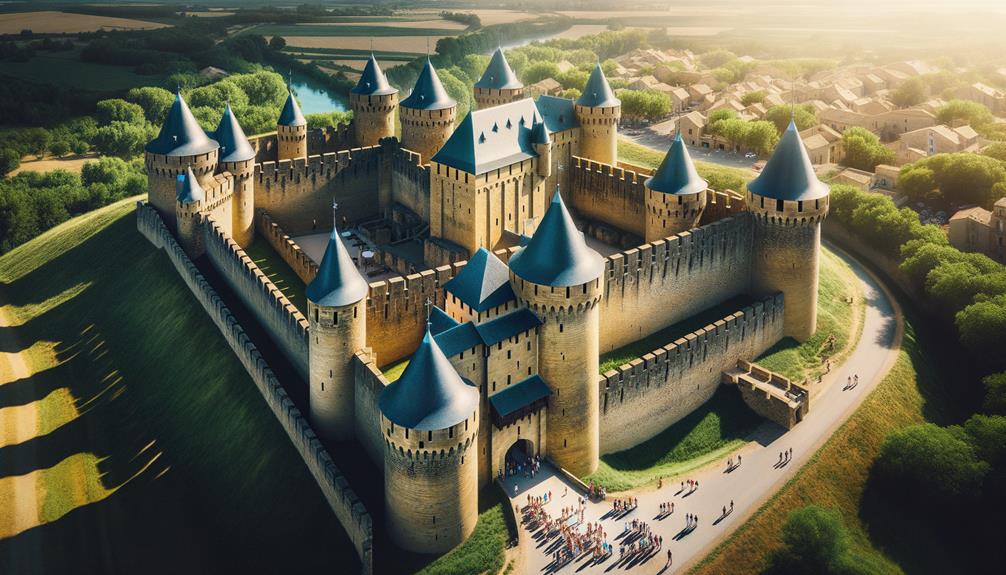
As I stood admiring the ancient walls of Carcassonne, I couldn't help but notice how modern defensive features have seamlessly merged with historical architecture. The fortress, rich in history, now includes steel, concrete, and advanced technology to boost protection while preserving its medieval charm. These modern enhancements ensure that the structure serves as both a practical security barrier and a cultural landmark that continues to draw visitors.
During my guided tour, I saw firsthand how the fortified walls of Carcassonne exemplify this blend of old and new. Traditional elements like arrow slits and battlements coexist with contemporary innovations, offering a unique visual experience. Though the walls appear ancient, they are reinforced with modern materials that ensure their durability and strength.
Reflecting on this integration of past and present, I realized that Carcassonne's walls are more than just historical relics. They represent a living history that adapts over time, balancing the preservation of heritage with modern security needs. The tour highlighted how these walls continue to protect and inspire, connecting different eras and sparking the imagination of all who visit.
Tour Options
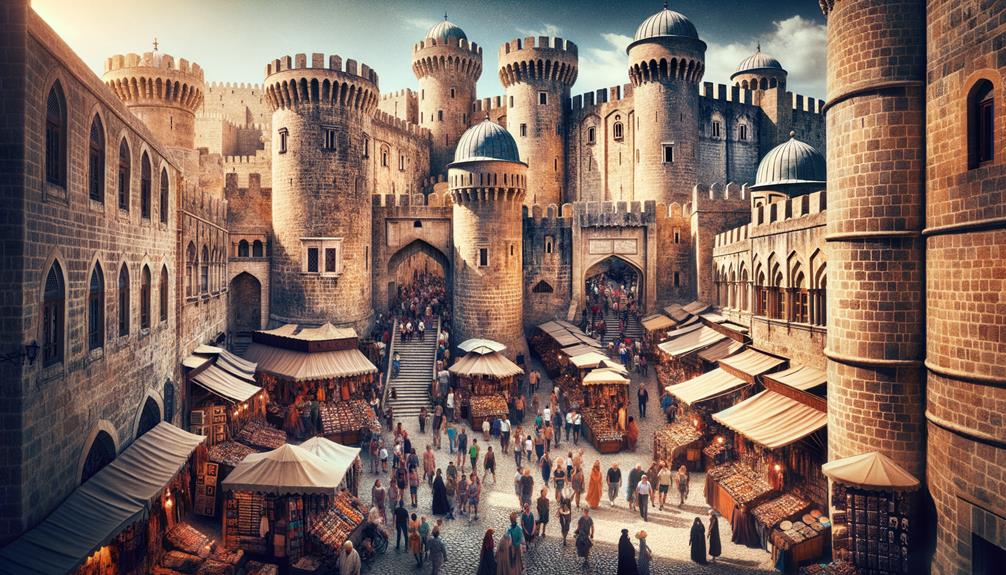
Exploring Carcassonne offers diverse options to fit every visitor's interests and schedule. Day trips from Toulouse bring you right to the heart of Carcassonne's medieval wonders, making it easy to experience the history without worrying about transportation.
For those who prefer a tailored experience, private guided tours are a great option. Walking through the fortress with a knowledgeable guide provides deep insights into the ancient walls and cobblestone streets. The Carcassonne: Fortress Walking tour lets you fully engage with the past and soak in all the fascinating details.
If you're a food and wine enthusiast, wine tasting tours within the fortress offer a delightful mix of history and local flavors. For a broader historical perspective, the Lastours Castles tour, which includes a visit to the Cité de Carcassonne, offers an extensive journey through the region's rich past.
Viator, Inc. also offers a variety of tours to Carcassonne Castle, ensuring there's something for everyone. Whether you're after an in-depth exploration or a relaxed stroll, the tour options in Carcassonne make every visit memorable.
Booking Information
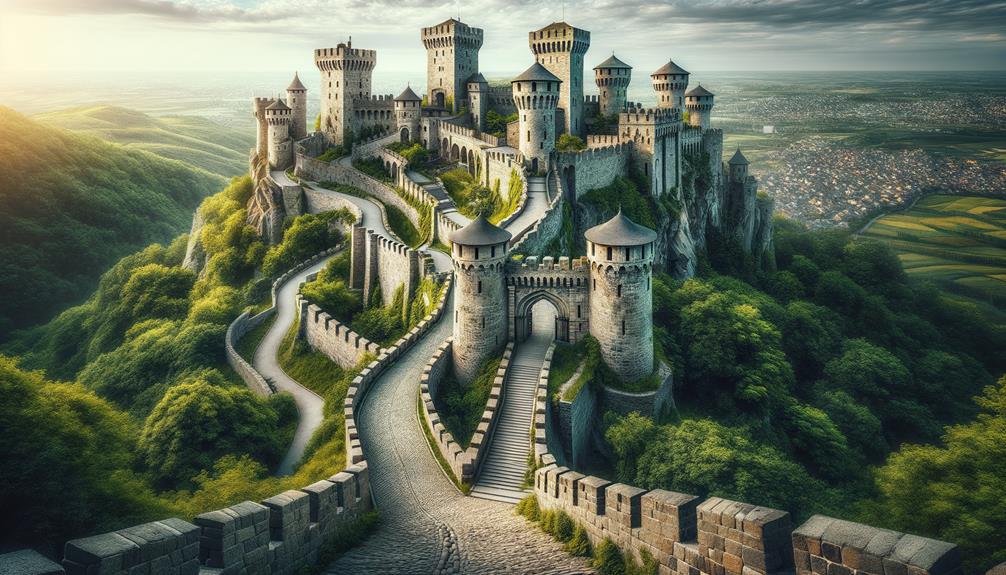
Securing your spot on the Carcassonne Medieval Fortress Tour is easy and promises a memorable journey through history. This private walking tour is perfect for those looking for a more personal and engaging experience. Here's how to book:
- Visit the official tour website: Here, you'll find all the information you need, including tour times and language options.
- Choose your date and time: The tour runs throughout the day with guides available in French, English, and Spanish.
- Confirm your package: At just €9.50 for entrance to the castle, this tour is a great deal.
- Complete your booking: Enter your details and finalize the payment to secure your spot.
Reflecting on my visit, the convenience of hotel pickup and drop-off made the experience seamless. The 1.5-hour tour flew by, thanks to the engaging guide. Rated highly by travelers, the guide's passion for history and storytelling brought the medieval fortress to life. I found the value for money to be outstanding, reflected in the overall rating. With a Product ID of 361120, this tour is a must for anyone interested in Carcassonne's rich past.
Customer Reviews
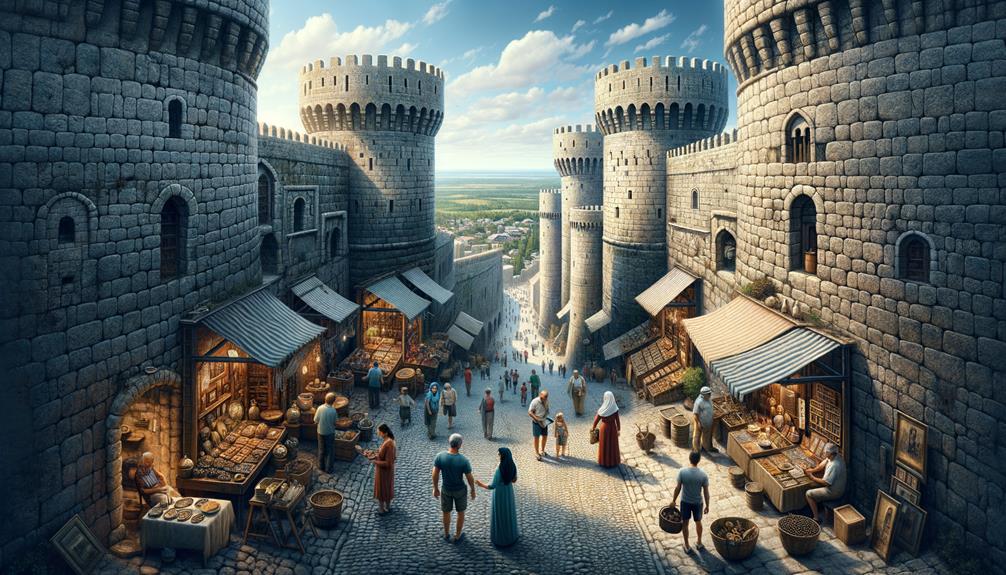
Booking the Carcassonne Medieval Fortress Tour is a breeze, and the value it offers has left travelers raving about the experience. Many visitors praise the guided tour for being worth every euro. With an average rating of 4.5/5, it's evident that guests feel they are getting their money's worth. The guide, who consistently earns a perfect 5/5 rating, is noted for being engaging, knowledgeable, and friendly.
The private guided experience, which includes hotel pickup and drop-off, has been particularly well-received. Customers appreciate the smooth service from beginning to end, allowing them to fully immerse themselves in the medieval history without worrying about logistics.
Here's a quick look at customer ratings:
| Aspect | Rating | Comments |
|---|---|---|
| Guide | 5/5 | Engaging, knowledgeable, friendly |
| Value for Money | 4.5/5 | Worth every euro |
| Overall Satisfaction | 4.8/5 | Memorable and enriching |
These reviews clearly show that the Carcassonne guided tour provides not just historical insights but also a seamless and enriching experience. Located in the picturesque Carcassonne, Occitanie, France, this tour (product ID 361120) is a perfect blend of history and modern convenience.
Gateway to the Past
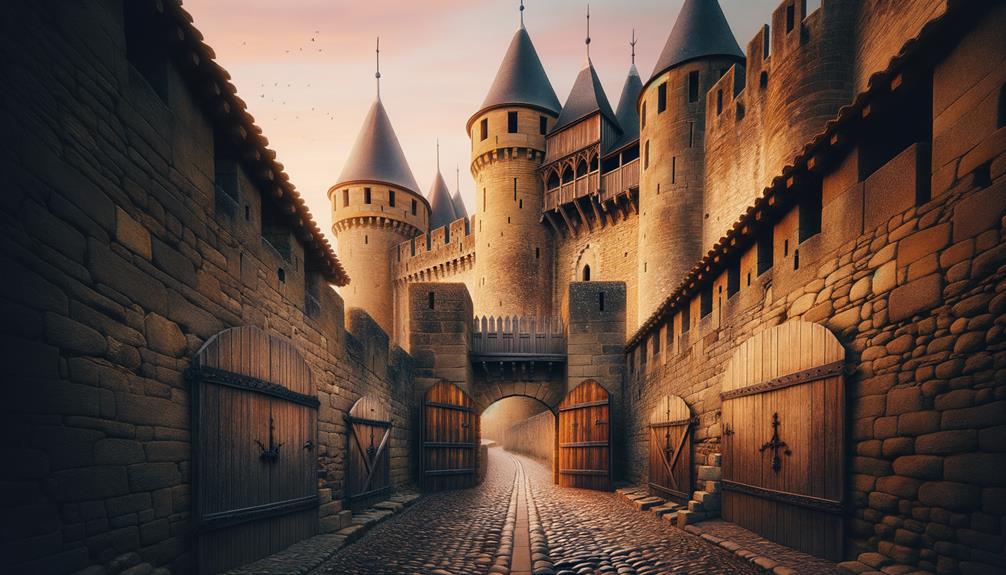
Passing through the Porte Narbonnaise, you instantly feel like you've stepped into another era, welcomed by the imposing defenses and detailed architecture that have withstood the test of time. The thick stone walls, complete with murder holes and portcullises, tell stories of medieval battles and brave knights. Convenient pay car parks make access to the Citadel easy, and you can roam its maze-like streets for free, though there's a small charge to enter the castle itself.
Starting my tour of the castle, I was struck by how well history has been preserved here. The Citadel's narrow lanes and stone buildings vividly depict life from eight centuries ago. Here are a few highlights:
- The Romanesque frescoes: Tucked away in the old palace, these paintings offer a glimpse into medieval artistic expression.
- Sturdy portcullises: Once crucial for defense, they now stand as monuments to resilience and strength.
- Statues and sculptures: Each piece tells a silent story about the skilled artisans of the past.
- Murder holes: These features are a stark reminder of the fortress's defensive strategies.
Walking through the Citadel, I felt deeply connected to the past. Every step was a tribute to human creativity and the enduring spirit of freedom.
Panoramic Vistas

As I climbed up to the wall walk of Carcassonne, the expansive views were truly breathtaking. The medieval fortress's strategic location and the beautiful landscape stretching to the Montagne Noire and the Pyrenean mountains were all laid out before me. Walking along the elevated path, I couldn't help but admire the 360-degree views, punctuated by round, square, and pointed towers. Each step offered a new angle, showcasing the citadel's architectural beauty and historical significance.
From my high perch, the town below looked almost frozen in time. The Basilica's steeple stood tall, adding a striking vertical element to the scenery, while the distant Pyrenees provided a majestic backdrop. It was easy to understand why this fortress was so important; its height offered not only defense but also a sweeping view of the entire region.
As I continued my walk, the strategic value of these walls became even clearer. The views weren't just beautiful; they were critical for spotting any approaching enemies. Every tower and turret had a role in the fortress's defense. This walk wasn't just a casual stroll; it was a journey through history, giving me incredible views and a deep sense of freedom and discovery.
Frequently Asked Questions
How Long Should You Spend in Carcassonne?
I'd recommend spending at least a full day in Carcassonne. This gives you enough time to wander the cobblestone streets, soak up the medieval vibes, and really get a feel for its rich history without feeling rushed. Every moment there is worth it.
Do You Have to Pay to Go in Carcassonne Castle?
Yes, you do need to pay to get into Carcassonne castle. While wandering around the Citadel is free, accessing the castle's fascinating interior comes with a fee. It's a small price for such a rich historical experience, don't you think?
Is Carcassonne the Largest Medieval City in Europe?
Carcassonne might not be the biggest medieval city in Europe, but it's definitely one of the most captivating. Walking through its old streets, you can really feel the history in every stone. It's an experience you won't forget.
How Authentic Is Carcassonne?
Carcassonne feels incredibly authentic. As I walk through its ancient walls, towers, and citadel, the medieval atmosphere envelops me. The 19th-century restoration and UNESCO recognition validate its historical integrity, making me feel truly transported back in time.

